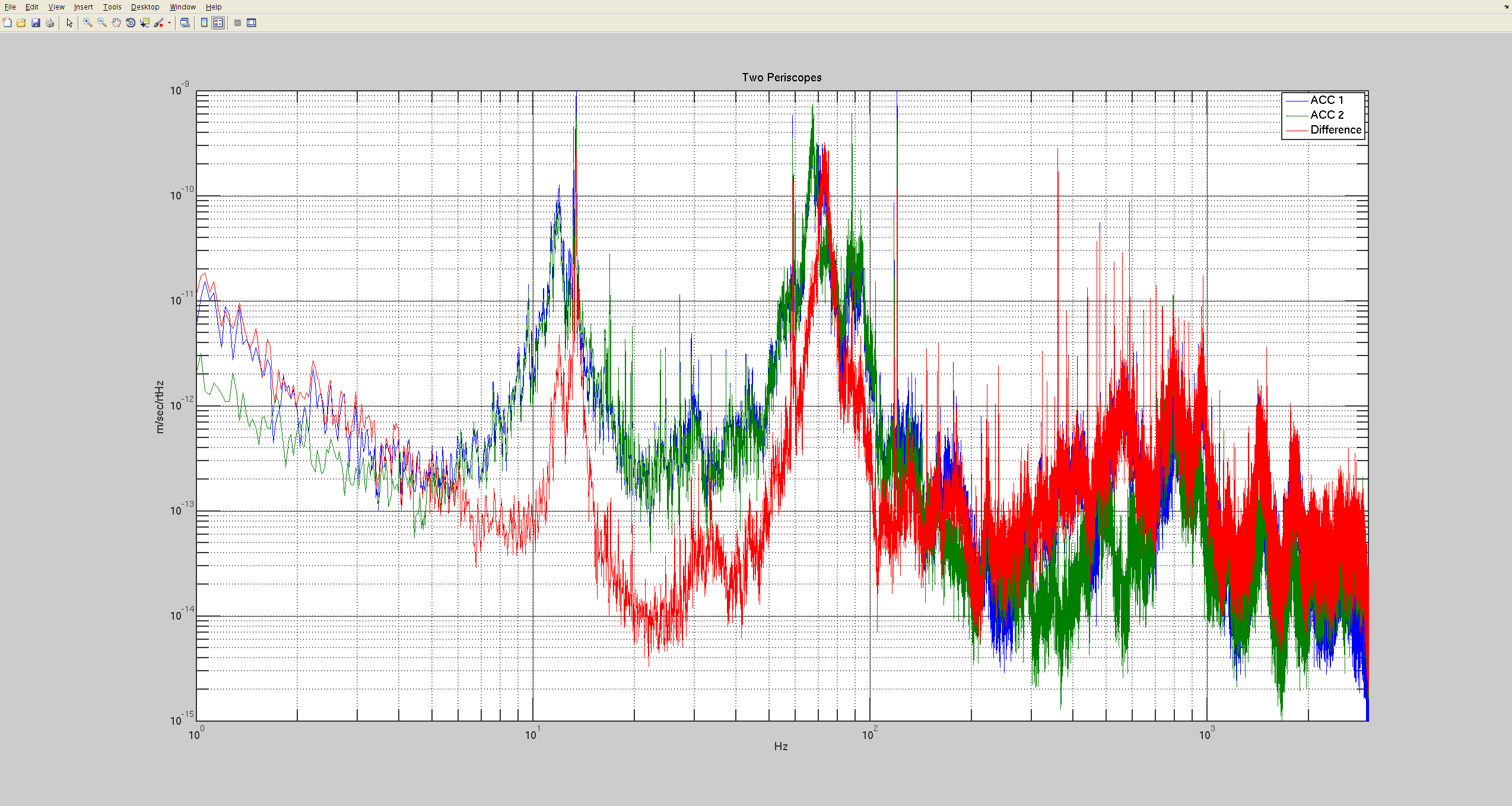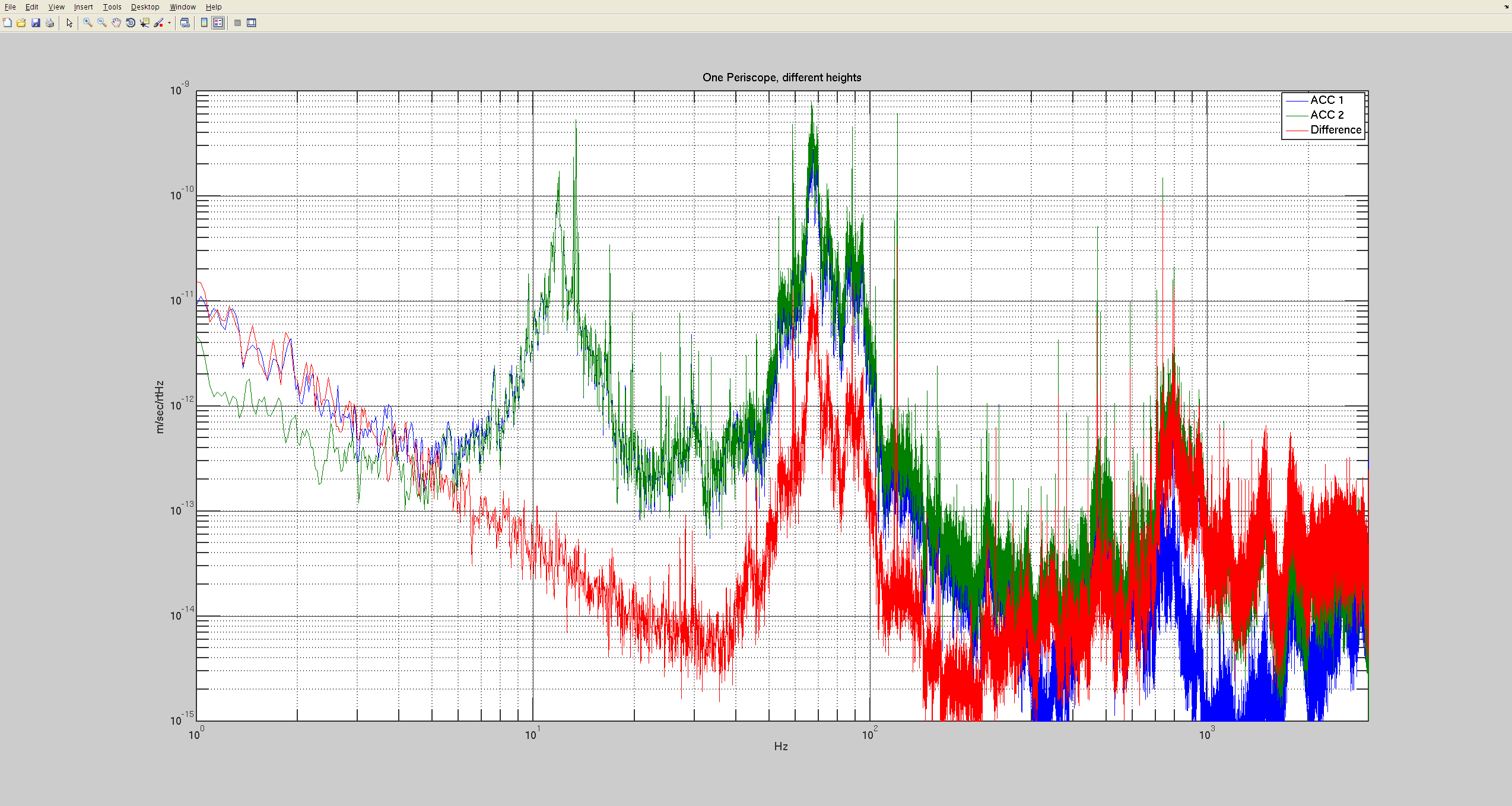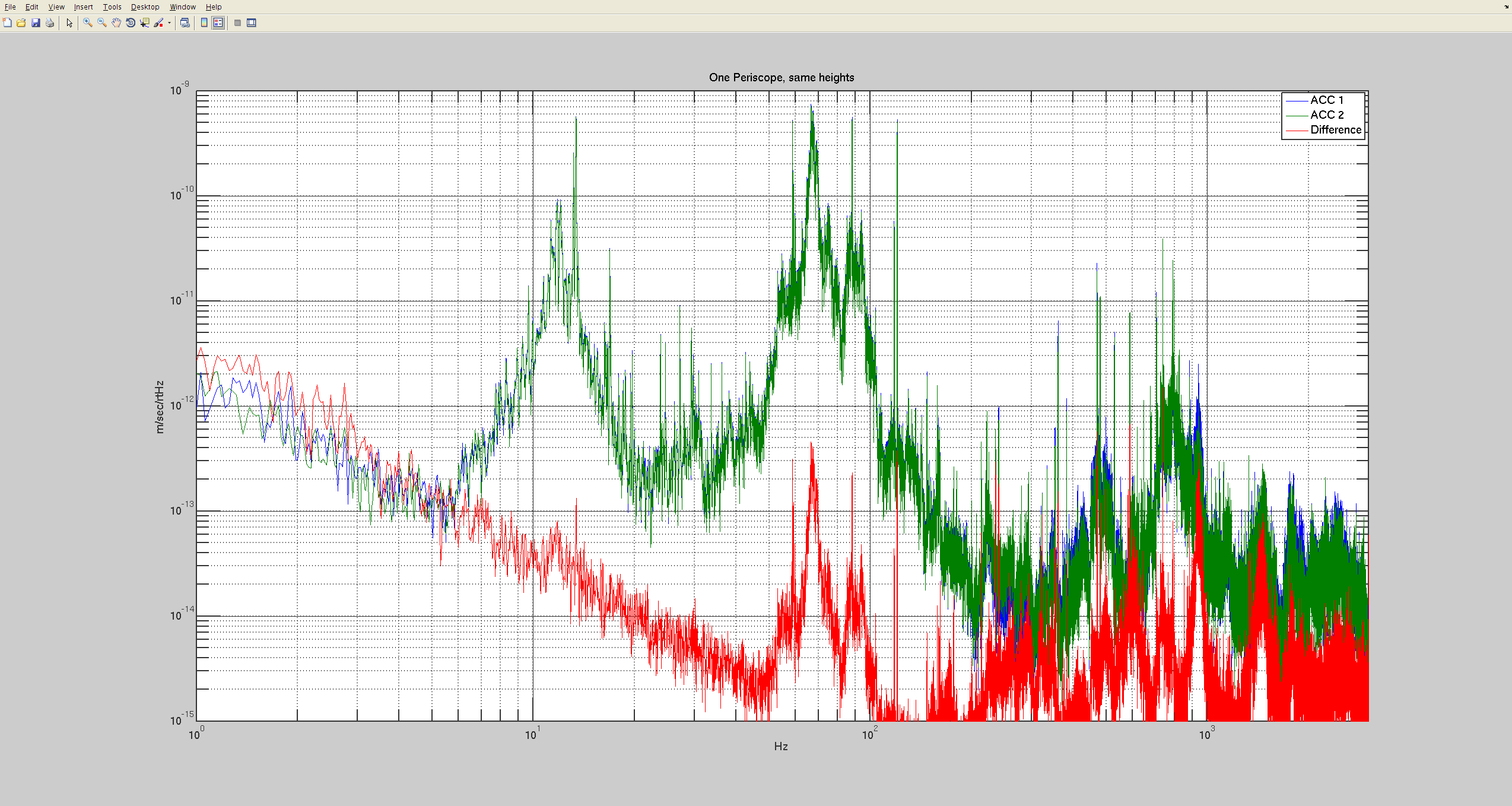Several updates on matlab scripts modifications I recently made during data processing
1- generate_QUAD_Model_Production.m. Produces a matlab model for damped and undamped quad suspension (/ligo/svncommon/SusSVN/sus/trunk/QUAD/Common/MatlabTools/QuadModel_Production)
The filter file used in the script to compute the modeled closed loop was out of date from the filters installed on our quads, so I updated it with the most recent damping filters : "dampingfilters_QUAD_2013-06-14.mat" living in /ligo/svncommon/SusSVN/sus/trunk/QUAD/Common/FilterDesign/MatFiles
design_damping_QUAD_20130614.m (that creates dampingfilters_QUAD_2013-06-14.mat) won't work if susTag is set to "L1:SUS-ETMY" since there's no 'etmy' variable in the ISI2SUS_projection_file.mat
2-plotquad_matlabtfs.m. Processes the measurements and plots them against our model (/ligo/svncommon/SusSVN/sus/trunk/QUAD/Common/MatlabTools)
The option of plotting the measurements with the damping active against the closed loop model has been added to the script, with a new flag "isDamped=true/false" at the beginning of the script
3-Matlab_TFs.m. Launches automated transfer functions (/ligo/svncommon/SusSVN/sus/trunk/Common/MatlabTools/SchroederPhaseTools)
The script has been modified in order to take transfer functions on several suspensions at the same time. The drive signal txt file used by awgstream to send an excitation is now suspension specific, as well as the diary file. Those two files were creating conflicts and error messages when two similar tf scripts were beeing run at the same time.
Also, in order to make the script easier to read, and for future debugging purposes, I moved the sensor and actuator channel list out of the code, and packed it in a subfunction "generate_channel_list.m" located in /ligo/svncommon/SusSVN/sus/trunk/Common/MatlabTools/SchroederPhaseTools/
4-collect_schroeder_TF_v9DQ_sma.m. Subfunction of Matlab_TFs.m. It creates a schroeder phased drive signal
From now, when Matlab_TFs.m is ran, the one time excitation signal, as well as the full drive signal will be displayed and plotted, as a function of time before the signal is sent to the DAC.
















